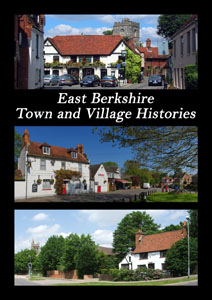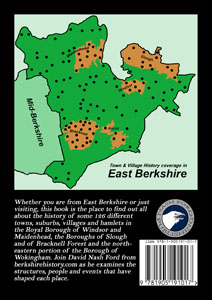|
|
|
Holyport
Muddy Origins

Holyport is locally thought to mean literally what it says, Holy Port, a stopping off point for pilgrims on their way from Canterbury to St David’s, but old documents show that the name originally stemmed from Horrig-Port meaning Muddy Market – thoroughly unromantic. The beautiful village green was one of several stopping places for drovers to graze their sheep in the parish of Bray. Today the place is a delightful village with lovely old buildings, including a number of pubs, set around this green. The George Inn is 16th century and retains its old brick brewhouse. The Belgian Arms is so named because, when it was previously called the Eagle, passing German prisoners of war would salute the pub sign as a symbol of their country. So the name was changed.
Most of Holyport lies within the manor of Philberts (formerly Philibert’s), which was merged with the manor Cresswells in about 1283. Both had old moated manor houses either side of the Ascot Road, just north of the green. The latter now lies under the motorway, but earthworks of the former are still traceable. It had been the home of the Lords de St Philibert, friends of Royalty. In 1345, at the age of only eighteen, the 2nd Lord and his friends went on a pilgrimage to Italy, where they were unjustly imprisoned. In retaliation,
King Edward III
threw all English resident Italian merchants into the Tower of London until young St Philibert was released. Unfortunately, this still took two years. Around 1550, this earlier house was replaced by a superb black and white timber-framed building. This was eventually the home of King Charles II’s closest friend,
William
Chiffinch, and a regular meeting place for the King and his mistress,
Nell
Gwynne. Sadly, this was ruthlessly demolished in 1780 and replaced by a castellated Regency Gothic revival building which, in 1860, became a military academy attended by Sir Winston Churchill. Left in a bit of a state after housing German prisoners of war during the First World War, it was pulled down in 1919. Neither of the subsequent replacements have been particularly noteworthy.
There are a
number of other ancient manors in the area, including Stroud Farm, once Stroud Hall, with an impressive array of ancient farm buildings, including a 15th century barn. The house is a partly 14th century building, dating to a time when it was called
Shiplakes. At the end of that century, it was in the hands of the well-known Staverton family. William Staverton was one of the surveyors of Maidenhead
Bridge but was attacked and murdered in 1401 by “certain evil-doers”. Another branch of the family lived at Heathley Hall in
Warfield.
Read more history of
Holyport in David Nash Ford's book, 'East Berkshire Town and Village
Histories'. Click
to Order direct from the Author.
 |
 |
NEW
BOOK
Whether
you are from East Berkshire or just visiting, this book is the
place to find out all about the history of some 126 different
towns, suburbs, villages and hamlets around Windsor and
Maidenhead, Slough and Bracknell Forest. Join David Nash Ford
from berkshirehistory.com as he
examines the structures, people and events that have shaped each
place. Some of these histories were first published in part here
on this website, but they have all been considerably expanded
and are joined by many new histories of places often missed by
historians, including those which only joined Berkshire in 1974
or later. Click
for full details and purchase options.
|
|
|
|
 |







